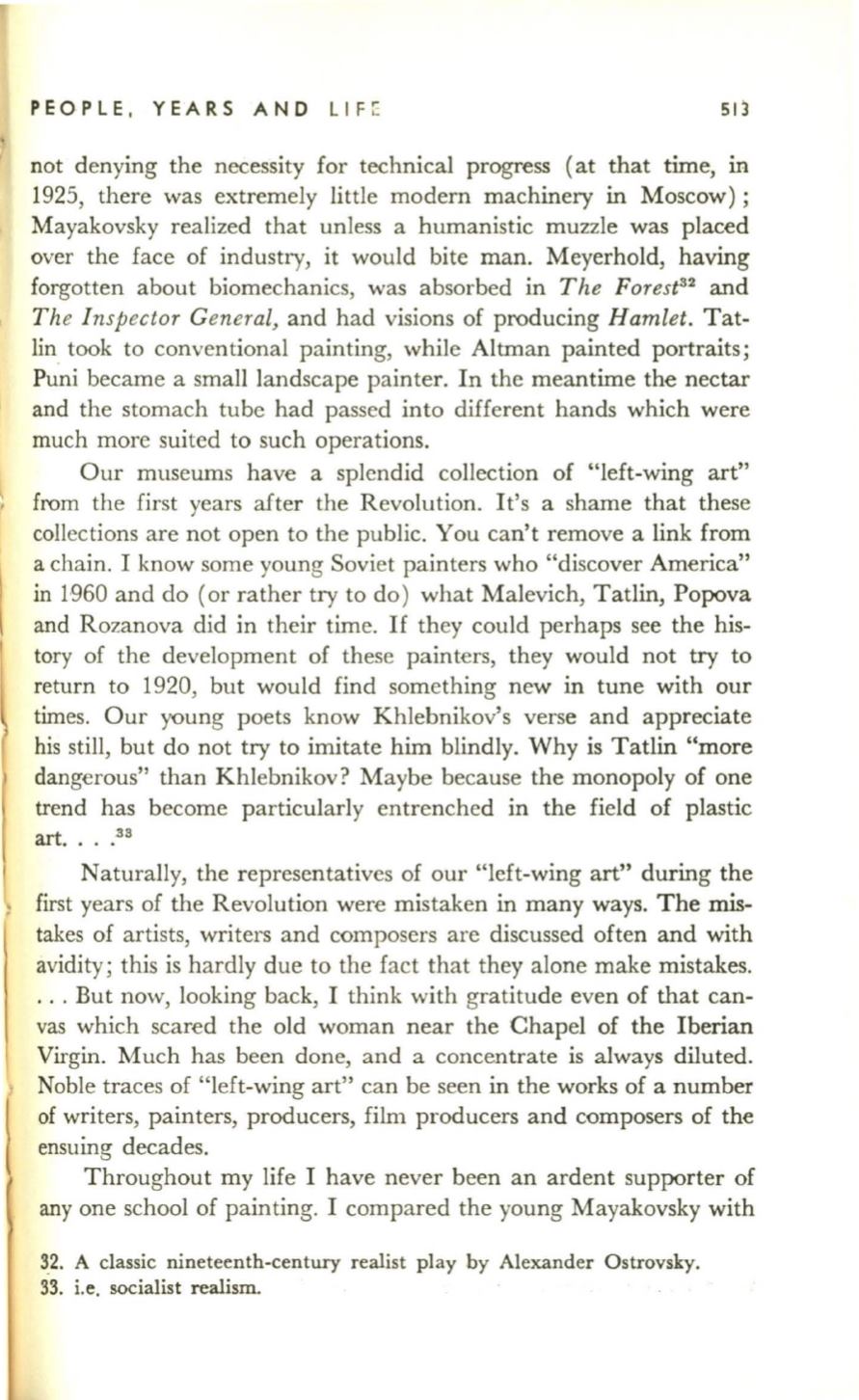
PEOPLE, YEARS AND
Lin
51 )
not denying the necessity for technical progress (at that time,
in
1925, there was extremely little modern machinery in Moscow);
Mayakovsky realized that unless a humanistic muzzle was placed
over the face of industry, it would bite man. Meyerhold, having
forgotten about biomechanics, was absorbed in
The Forest
32
and
The Inspector General,
and had visions of producing
Hamlet.
Tat–
lin took to conventional painting, while Altman painted portraits;
Puni became a small landscape painter. In the meantime the nectar
and the stomach tube had passed into different hands which were
much more suited to such operations.
Our museums have a splendid collection of "left-wing art"
from the first years after the Revolution. It's a shame that these
collections are not open to the public. You can't remove a link from
a chain. I know some young Soviet painters who "discover America"
in 1960 and do (or rather try to do) what Malevich, Tatlin, Popova
and Rozanova did in their time.
If
they could perhaps see the his–
tory of the development of these painters, they would not try to
return to 1920, but would find something new in tune with our
times. Our young poets know Khlebnikov's verse and appreciate
his still, but do not try to imitate him blindly. Why is Tatlin "more
dangerous" than Khlebnikov? Maybe because the monopoly of one
trend has become particularly entrenched in the field of plastic
art....
33
Naturally, the representatives of our "left-wing art" during the
first years of the Revolution were mistaken in many ways. The mis–
takes of artists, writers and composers are discussed often and with
avidity; this is hardly due to the fact that they alone make mistakes.
. . . But now, looking back, I think with gratitude even of that can–
vas which scared the old woman near the Chapel of the Iberian
Virgin. Much has been done, and a concentrate is always diluted.
Noble traces of "left-wing art" can be seen in the works of a number
of writers, painters, producers, film producers and composers of the
ensuing decades.
Throughout my life I have never been an ardent supporter of
anyone school of painting. I compared the young Mayakovsky with
32. A classic nineteenth-century realist play by Alexander Ostrovsky.
33. i.e. socialist realism.


